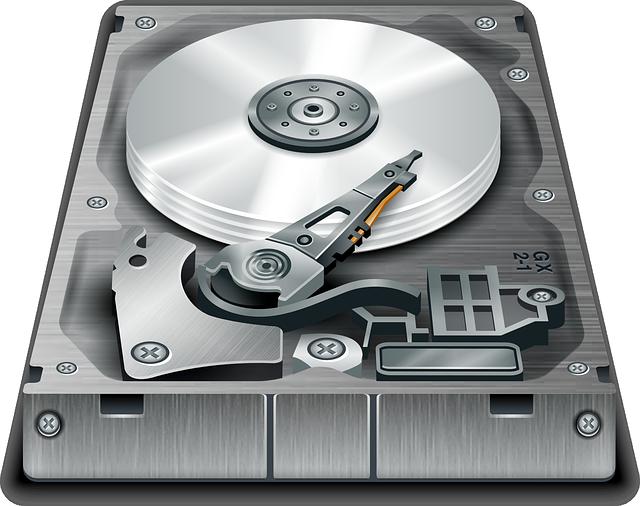
There are many errors when the Disk Utility fails to operate. The Disk Utility is an application included in Mac OS X, which performs lots of useful and difficult operations like repairing system file permissions and minor errors in a disk’s directory structure.
The Disk Utility can be used for dividing the hard disks into different partitions. The advantages of using this free Utility are that has a user-friendly interface. The Disk Utility bundled with the OS X 10.5 and later has features like addition, deletion and resizing of hard drive partitions, without erasing the hard drive. The creation of a larger partition and even a splitting of the partition is made possible by this Utility, without any data loss from the hard drive.
We need a Mac with OS X 10.5.X or later installed. The partitioning task is not at all time consuming. Disk Utility can help in partitioning and then moving back the data. The hard drive is mounted and then there is a launching of Disk Utility. The drive that requires the partition is selected. The Partition also shows the graphical representation of the hard drive. Firstly, the partition is resized. Next, the + option is used to add a partition. The size is changed with the size option. The Apply button can be used when we are ready for the partitioning.
However, sometimes the Disk Utility fails, when we attempt to partition mac drive with the Disk Utility and the error messages received are:
Some errors due to Disk Utility Failure and their resolution
- “Partition failed” message with the error
“Couldn’t modify partition map because file system verification failed.”
This can be fixed with the help of file system check command line utility. We need to boot in the single user mode.
This is followed by the following command at the command prompt
/sbin/fsck -fy
After fsck is completed, we can reboot or exit.
The partition is verified again in the rebooted Mac system, using the Disk Utility.
The disk can be now partitioned without any error messages.
- “Couldn’t Unmount Disk”
This error can occur even during the partitioning, verification and repair of the disk and also during disk formatting. The disk utility stops verifying at this point of time and stops with this error.
The easiest solution is the booting from some other drive and the Disk Utility is run from there.
The resolution of the above error can be done through the following ways.
Using the USB Boot Drive
The OS X boot drive like the one Mavericks boot Installer drive can be used. The installation and the recovery drives can be used. They just need to be bootable and separate from the primary boot disk, storing the installed OS. The Mac is rebooted with the USB drive. The Disk Utility is chosen and First Aid chosen to repair the disk. Now the task of partitioning is done again. This resolves the problem.
Using the Recovery Partitions
This option can be used when the “Unable to Unmount Error” is triggered while formatting a non-boot partition. The recovery partition is included in the new versions of the OS X. The Mac is rebooted with the Option key. The Recovery partition is chosen. The Disk Utility is chosen and then the First Aid is used for the verification and the Repairing of the disk and the Erase option is used to format the disk.
- Unable to create new partition with Disk Utility on the external drive
The external drive needs to create space for cloning the Mac and Disk Utility is not allowing its modification. This will happen when the disk contains Core storage physical volumes and thus modification is not possible. If the external drive gets flagged as one of this drive, then this error can appear. This can be resolved by moving the backup to another external hard drive, then repartitioning, and reformatting the hard disk and finally moving back the backup.
- Deleting a partition in disk Utility Fails
The error comes as:
Disk Utility cannot modify this disk because it contains CoreStorage physical volumes. Use command line distil instead.
The selected partition won’t be changed.
This is because the partition table for the whole drive cannot be modified when one of the partitions is encrypted. This is because CoreStorage is on.
Some more reasons for the failure of Disk Utility
Disk Utility actually claims to fix problems related to the volume directory, which can keep a track of where the files and folders are. These tools also can repair a partition map, which is a chunk of data, which shows how data is stored on the disk. Certain errors with individual errors can also be solved. Sometimes, the Disk Utility fails and displays the message
“Error: Disk Utility can’t repair this disk. Back up as many of your files as possible, reformat the disk, and restore your backed-up files.”
In such a scenario, we need to use disk repair apps that are available in the market.
Sometimes, we are unable to delete or repartition internal drive including Disk Utility. There are limitations of how much can be done, when the Recovery partition is booted. The Recovery partition is separate but it can lock the hard disk to an extent. This will not allow continuing with live edits like modification of the partition table. The solution lies in the use of the ‘Command + Shift + R’ button and then the Utilities package is downloaded from the internet and uploaded in the memory. This will unlock the hard disk and repartitioning is possible.
When the Disk Utility fails, then other than the special software being used from external vendors, Apple also provides with such tools for managing the faulty drives. We can also use the gpt command for the GUID partitions. These tools will enable the overwriting the drive’s partition scheme and then again using the drive as a raw device in Disk Utility.



















